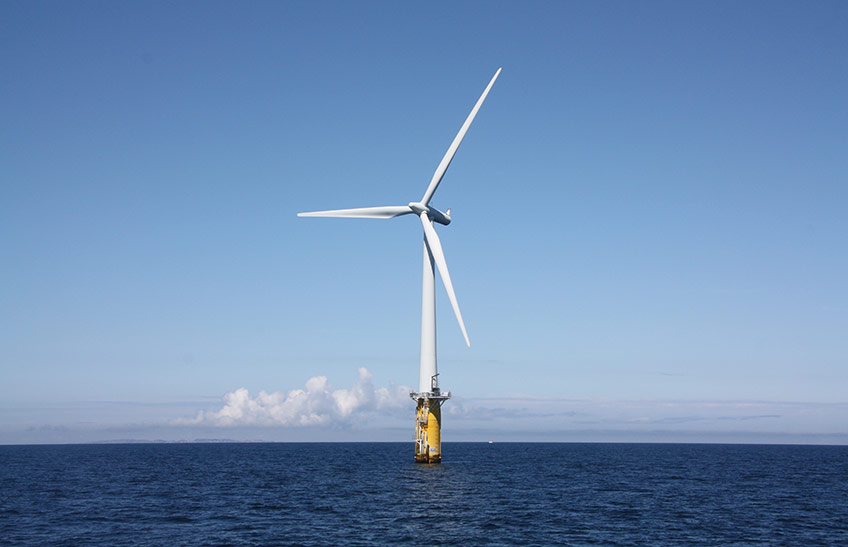Best of Both Worlds: NREL Optimizes the Control and Design of New Offshore Floating Turbines
NREL Optimizes the Control and Design of New Offshore Floating Turbines

First, National Renewable Energy Laboratory (NREL) researchers proved that systems-level, rather than sequential, design optimization can boost energy capture while cutting costs and critical loads in wind turbine systems. This means designing and optimizing the turbine’s control system simultaneously with the other system components rather than waiting until the end of the design process.
Now, NREL and its team of partners and external advisers will incorporate such controls co-design principles—designing and optimizing all system components, including the control system, simultaneously—in a revolutionary toolset to enable offshore floating system engineers to design radically new systems at greatly reduced cost. The new open-source, user-friendly toolset will be developed under the U.S. Department of Energy’s Advanced Research Projects Agency-Energy’s (ARPA-E’s) Aerodynamic Turbines Lighter and Afloat with Nautical Technologies and Integrated Servo-control (ATLANTIS) program.
The project to develop new turbine controls, named Wind Energy with Integrated Servo-control (WEIS), stands among two other NREL-led ATLANTIS projects as a resource to enable the next generation of efficient and cost-optimized floating turbine designs.
WEIS development will use core building blocks that include enhanced versions of the Wind-Plant Integrated System Design and Engineering Model (WISDEM)—a comprehensive optimization tool for wind energy systems—and OpenFAST, a mid-fidelity, multiphysics modeler, but with significant added capability. WEIS is a novel controls co-design package that coordinates the different features of the toolset and facilitates the co-design process at multiple levels of model fidelity.
The lowest fidelity level explores new system architectures and passes these candidate designs to mid- and high-fidelity levels for detailed co-design. If a design proves infeasible at these higher fidelity levels, it can be passed back to the low-fidelity level for modification. Rigorous model verification using detailed simulations under various wind and wave scenarios is performed at the highest model fidelity.
WEIS will incorporate new optimized control paradigms using advanced control actuators and sensors. The toolset will account for complex nonlinear dynamics of floating wind systems, including their coupling to wind and wave inputs. The goal of WEIS is its widespread use within the floating offshore design community—it will be flexible, open-source, and modular, allowing users to customize it to their own systems. In line with the ATLANTIS vision, a target criterion for the WEIS toolset is to greatly reduce the mass of turbines, platforms, and mooring structures, thus reducing cost.
WEIS will capture the designs being proposed in ATLANTIS projects, making the tool indispensable for innovation in low-cost, efficient offshore wind turbines. A unique aspect of this toolset development will be the cross-collaborations conducted between the WEIS development team and other teams in the ATLANTIS program: Collaborations with teams developing floating systems will ensure that WEIS is ready for use in exploring system architectures and designs; collaborations with teams conducting field tests of offshore floating system are critical in order to guarantee useful experimental data for validating WEIS; and collaborations with an external board of advisers will ensure that WEIS is widely used within the floating offshore industry.
The WEIS toolset will advance in partnership with the University of Illinois, Urbana-Champaign, and will depend on consultation with a diverse external advisory board containing more than 20 organizations. The NREL team developing WEIS has worked together for many years and collaboratively led the transition toward a systems-engineering perspective in wind energy.
Last Updated May 28, 2025
